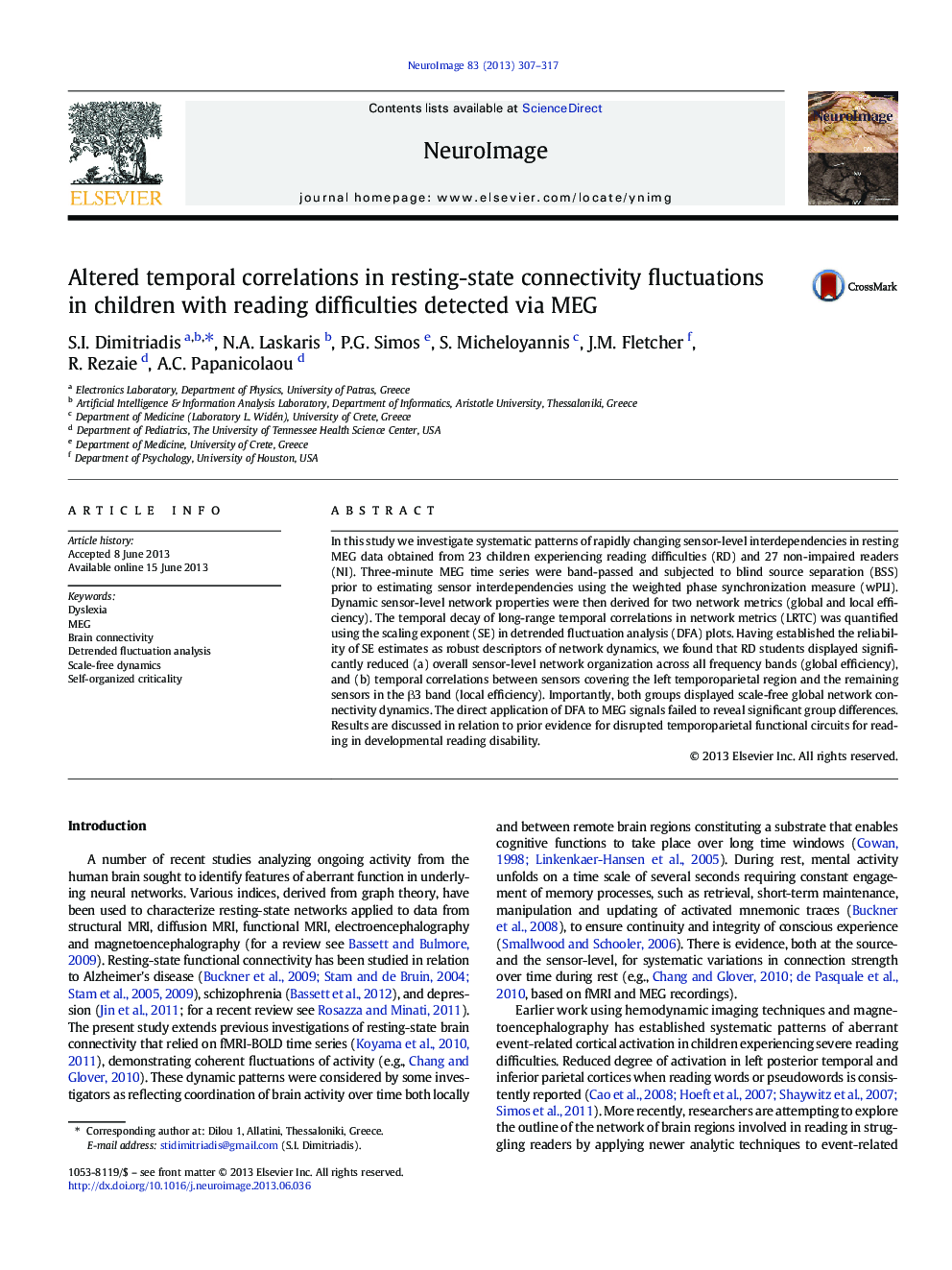| Article ID | Journal | Published Year | Pages | File Type |
|---|---|---|---|---|
| 6028127 | NeuroImage | 2013 | 11 Pages |
â¢RD children displayed reduced resting-state network organization in MEG recordings.â¢There were reduced (auto)correlations in left temporoparietal sensors in RD.â¢Local and global efficiency measures correlated with reading ability.â¢Both typical and RD children showed scale-free global connectivity dynamics.â¢Application of blind source separation improved detection of significant results.
In this study we investigate systematic patterns of rapidly changing sensor-level interdependencies in resting MEG data obtained from 23 children experiencing reading difficulties (RD) and 27 non-impaired readers (NI). Three-minute MEG time series were band-passed and subjected to blind source separation (BSS) prior to estimating sensor interdependencies using the weighted phase synchronization measure (wPLI). Dynamic sensor-level network properties were then derived for two network metrics (global and local efficiency). The temporal decay of long-range temporal correlations in network metrics (LRTC) was quantified using the scaling exponent (SE) in detrended fluctuation analysis (DFA) plots. Having established the reliability of SE estimates as robust descriptors of network dynamics, we found that RD students displayed significantly reduced (a) overall sensor-level network organization across all frequency bands (global efficiency), and (b) temporal correlations between sensors covering the left temporoparietal region and the remaining sensors in the β3 band (local efficiency). Importantly, both groups displayed scale-free global network connectivity dynamics. The direct application of DFA to MEG signals failed to reveal significant group differences. Results are discussed in relation to prior evidence for disrupted temporoparietal functional circuits for reading in developmental reading disability.
